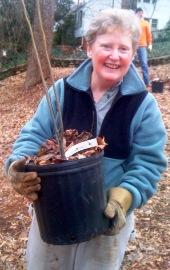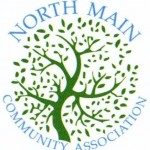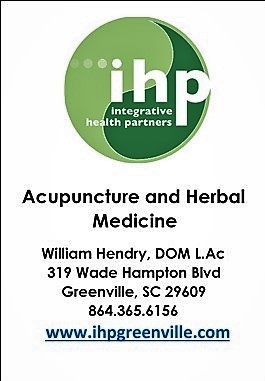Your 2010 Board of Directors:
President: Jim Gilreath
Vice-President: Mike Cubelo
Treasurer: Lois Graves
Recording Secretary: Phyllis Gilreath
Membership: Joyce Murphy
Webmasters: Michael Huskey
Chad Chandler
* The Board of Directors meets the first Wednesday evening of each month at 6:30 PM at the Bobby Pearse Community Center.
New NMCA Website
If you haven’t visited us yet, we encourage you to check out the new website by clicking here. It has a new look and is much more accessible and user-friendly. Keep up-to-date on issues that affect your neighborhood. Join or renew easily right online. Learn more about your community demographics. Ask a question of the NMCA Board or your city officials. See alerts and updates about city officials voting records, positions on issues, and much, much more. Comments always welcome….
BE COUNTED! The 2010 census is underway and you will be receiving documents in the mail in March. The Greenville Urban Area receives approximately $12.3 Million each year based on the census. These funds support transportation projects such as Greenlink, the Bike Master Plan and the Swamp Rabbit Trail. In addition, the City receives $1.5M for housing block grants and $1.5M for city services such as fire and police and road maintenance. PLEASE do your part and fill out the census! (email from Amy Ryberg Doyle, 2/5/10)
The Census Bureau is still training/hiring individuals from local neighborhoods to go door-to-door after the Census is mailed out to provide assistance and to insure that the census is filled out correctly. For information on training sites and dates, contact Richard Breen at 467-1540.
Walkability on Stone Avenue??
Be aware of possible changes on Stone Ave. which will affect our neighborhood and traffic flow. Over the next 6 months the city is funding a planning study and blueprint for the future growth and development of the commercial corridor along Stone Avenue and adjacent areas. We already have a proposed 24 hour Waffle House coming to East Stone Avenue and the city is trying to develop a plan to better guide development to reflect more of what we, the residents, want to see in this area. Many rumors are floating about, including narrowing Stone Ave to 2 lanes of traffic in order to install bicycle lanes and widen sidewalks to favor more pedestrian traffic. Hopefully this rumor is false because it would push traffic onto Earle Street and other east-west corridors; but as we have seen, anything is possible. It is important for each of us to get informed and involved in the planning process to make sure that Stone Ave. reflects our vision and not that of some out of town planner who does not know our needs. Our opportunity is during the public part of the planning input process (see calendar for dates) and will include workshops, walking tours of the area, design sessions and the opportunity to see what will be presented to the City. Remember, if you do not voice your opinion, you can not complain about what happens. Watch your monthly newsletter or check our website for updates.
The Stone Avenue Master Planning Process will kick off Thursday, March 18th from 6:30pm – 8:00pm at the Earle Street Baptist Church. Nationally known urban architectural firm Dover, Kohl & Partners has been selected by the steering committee to lead the planning for Stone Avenue. See the calendar at the end of the newsletter for additional dates. We encourage all residents and business owners in the North end to join in this design process and participate in one or more of the open house meetings. Visit the project website by clicking here.
Underground Utility Program Update
The City of Greenville is beginning implementation of its Utility Underground Program. Funding comes from the following sources:
• One half of one percent of Duke Energy’s gross revenue from the sale of electric power within the Greenville city limits
• An increased electric franchise fee (paid by Duke Energy customers in the city of Greenville) from 4% to 5%, with all new revenue devoted to overhead-to-underground conversion
Estimated revenue is approximately $1.2 million per year and 20% is dedicated to conversion of residential service lines. (That’s right….you are subsidizing the program for commercial entities in the areas that are being done first….Haywood to Laurens Rd. and then Augusta Rd). This program is ONLY for conversion of lines from Duke’s power pole on the street to your service meter. This component of the program is petition-based and open to all homeowners in the city of Greenville, with a subsidy of up to $1000 per homeowner on just the line itself. The homeowner has to provide an electrician for meter work and is responsible for any property damage. There are a number of requirements that must be met in order to qualify. In a nutshell, one resident must take the lead for a minimum of 8 homeowners served from at least 2 adjacent overhead transformers. The NMCA is working on finding suitable areas in our neighborhood that would qualify. If you are interested, contact us via our website. The city has a website with more information, requirements, frequently asked questions and the petition. Access it by clicking here.
Athletic Field Lighting Project
The city’s sports lighting project is underway. Old systems have been or are being removed at all parks. The contractor will begin installing all of the electrical wiring and panel boxes, so that when the poles arrive they will be ready to put them up. The lighting fixtures are designed exclusively for each site so they will arrive last. The tentative completion dates for the sports lighting project are:
Mayberry Park – 3/5/2010
Cleveland Park – 3/12/2010
Timmons Park – 3/19/2010
N. Main Park – 3/26/2010
Gower Park – 3/20/2010
Holmes Park – 4/2/2010
(Kevin Steins, Greenville Parks and Rec. Dept. via email from Amy Ryberg Doyle, 1/23/2010)
Park Work Day: See What you Missed!
On Saturday, January 23, several NMCA members….. your friends and neighbors….. braved the cold and gathered at North Main Rotary Park for an invigorating work day. We planted 95 container plants, ranging from one-gallon size to trees in 15 gallon containers and 100 plug size plants. Plantings at the park focus almost entirely on native plants. Native plants generally require less care and provide both food and habitat for wildlife. We can’t wait until spring to see the results of everyone’s hard work. Thanks to Park committee chairman Steve Mills for coordinating these efforts. Enjoy the pictures of your neighbors hard at work at our website.
Welcome to our newest members of the Community Development & Safety Committee: Julie Dunson Meredith, Trey Meredith, Andrew Mackenzie, Chip Broome, Dale Reeves &
Tommy Stephens
We’d also like to welcome our newest members of the Beautification Committee: Jean Martin & Vonnie Vance
If you would like to participate, please check the website for a listing of committees. Also, please help us increase membership by passing along the website to your friends, neighbors and businesses in the area and encourage them to join. Membership forms can be found on the web. Thank You!!
A better plan saves North Main park
(For those who may have missed it, the following is an article by Jeanne Brooks that appeared in the Greenville News on February 14, 2010. Our thanks to Steve Mills and Courtney Shives for providing the background information for the article….)
Pipes were the beginning. Not the beginning of the park, which was deeded in 1936, but of how it is now and what it will become.
Nine years ago, in the summer of 2001, Courtney Shives walked down into the North Main Rotary Park behind his house to find “huge pipes” lying around. Why? He called the city of Greenville. The city, he learned, was going to put the creek that winds through the park into pipes and cover them with earth to make a flat small field. Back in those days, says Steve Mills, a North Main resident and former president of the neighborhood association, these particular six acres or so on either side of the creek were affectionately known as “the mud park.” And the creek’s banks were seriously eroded.
Burying the creek might’ve been one solution, but not the best one environmentally. There was another. That’s the rest of the story. Shives’ brother Fletcher, who worked for the Environmental Protection Agency and happened to be in town then, wondered if the city had a permit from the Army Corps of Engineers to do the work it planned on doing. The question of a permit brought the creek a reprieve and gave Shives and other North Main residents time to enlist support from their neighbors and groups such as Upstate Forever and the Sierra Club for a different way to approach what needed to be done in the park.
Because the creek wasn’t the only concern. Also, the hillsides were overgrown with English ivy, kudzu and dense stands of bamboo — all of which are essentially interlopers, none being native to South Carolina or for that matter the United States. The North Main residents wanted an attractive, low-maintenance, usable park. “We wanted a more natural area,” Mills says.
They lobbied the city for a master plan. The city agreed. Residents helped choose the company: Earth Design Inc. of Pickens, owned by Rick Huffman. Huffman’s plan called for native plants such as wild indigo, blue start, purple cornflower, native azaleas, black gum, red bud, spiderwort, crested iris, green and gold, and more. All plants that, because they are native, grow well in South Carolina, without a lot of watering and babying and spraying of pesticides.
Shives and others raised money, the county chipped in, as did the city. Among other things, the city built a stone amphitheater for school children to come and learn about native plants, also a new playground, a picnic shelter, a new main path that strollers can now travel. Huffman contributed advice and work supervision for free, and the North Main community contributed hard work, time, backs, muscle. Over the past two years, they have cleared and weeded, and planted 500-600 plants, Mills says. The creek bed has been restored, the creek saved, the park reclaimed and made better.
There’s more work to do, for instance legacy trees like oaks to plant. But already people with dogs and kids are drawn here throughout the day. And just wait a few months. The trees will leaf and the flowers unfold. You’ll really see the natural splendor planted here come spring.
Bravo, North Main.
Where Nature and Culture Meet
What began in 1958 as a camellia preserve on a small parcel of land adjacent to John C. Calhoun’s 19th-Century Fort Hill estate has since grown to 295 acres of cultivated landscapes and natural woodlands. Designated the State’s botanical garden in 1992, the Garden is at the intersection of Highway 76 and Pearman Boulevard at Clemson University. Visitors are welcome free of charge, every day, dawn to dusk.
The South Carolina Botanical Garden offers monthly First Friday Nature Walks for adults as well as a variety of cultural and educational programs for children and families throughout the year. The Nature-based Sculpture Collection has gained international recognition. Sprouting Wings, a children’s after-school gardening program, brings together Clemson students, teachers, and underserved youth. Year-round programs for adults focus on sustainable gardening and natural history. Spring and Fall Plant Sales feature unusual landscape plants for Southeastern gardens with knowledgeable staff and volunteers on hand to help with plant selection.
The Garden is accessible by paths and trails, many of which are hard surfaced. History buffs will enjoy the Hanover House (ca. 1716) and the Hunt Family Cabin (ca. 1826). Art connoisseurs will want to experience the Garden’s collection of site-specific, nature-based sculptures and the art galleries in the Fran Hanson Discovery Center. Other points of interest include the many demonstration gardens, such as the Camellia Garden, Wildlife Habitat Garden, Xeriscape Garden and Hosta Garden; the 70-acre Schoenike Arboretum; the Heritage Gardens, and nature trails.
Also within the Garden, the Bob Campbell Geology Museum is open Wednesday through Sunday and is home to an extensive collection of gems, minerals and fossils of the region. The Geology Museum boasts an elaborate fluorescent mineral display room and has the only saber-toothed cat exhibit in the Southeast.
(Clemson University website)
Do you Know Where Your Veggies Come From?
South Florida is the winter veggie capital of the country which is why you may be paying more for tomatoes, peppers, squash, beans and corn until younger plantings are ready to harvest. Some Florida fields were a 100% loss from the January freeze. Damage was also reported in strawberries, potatoes and even cabbage. The total crop loss has been estimated at over $150 million. Some long time farmers say this is the worst they have seen since the 1970’s, mainly because of the duration of freezing temperatures. There was also damage in Georgia and Texas, which only adds to the plight of many farm workers. Seasonal workers are employed on a day-to-day basis and if there is no crop to harvest, there is no work. Estimates of lost income to farm workers exceed $20 million in Florida alone. Plus, if farm workers leave the area in search of other work, labor may be scarce when the young crops that survived the freeze or were planted later are ready for harvest. Damage to citrus crops has not been finalized, but crop estimates are expected in mid February and yields will likely be down from earlier figures.
Did you know that as of last year, any commodity covered under COOL (the Country of Origin Labeling law) must be labeled at retail to indicate its country of origin? This includes fresh fruits and vegetables. Most of us like to support local industries by purchasing at local fruit and vegetable stands and local grocers, but if not local, at least U.S. grown products. So, if you want to support US growers, be sure to look for the label either on the product or on signage in the produce department of your grocery store. (Phyllis Gilreath)
Take a Closer Look at the Bobby Pearse Center
The Bobby Pearse Community Center, 904 Townes Street, is a part of the City of Greenville Parks and Recreation division and is now staffed full-time, offering programs for children and adults.
Currently, they have an After School Program, which runs Monday through Friday, 2:45pm – 6:00pm. The program has 39 children enrolled who attend Stone Academy, League Academy, Beck Academy and Head Start. The program offers the children opportunities for tutoring, studying and homework. They also have snack time and access to a computer lab, art classes, intramural sports and drama. The children really enjoy the outdoor space behind the center, as well as games and activities inside.
Bobby Pearse Community Center has also begun hosting other programs, such as Fly Fishing for Beginners, Eight Pieces of Brocade and Qigong, What Creatures are in Our Creek?, and International Folk Dance. The Greenville Chess Club also meets at the center on most Thursday evenings. They welcome new members to their club. The Center is also used for meetings, birthday parties and other special occasions.
If you would like to inquire about availability and fees for rentals or if you have suggestions, questions or ideas about programs, please contact Pam Davis at 467-4331 or pdavis@greenvillesc.gov. For more information about Bobby Pearse Community Center, please visit the Greenville Parks and Recreation Website. (by Pam Davis)
Watch the NMCA website for new programs and activities.
Calendar
February 20 – Democratic Party Precinct Meetings. 10 am. Locations are still being confirmed, but will be published on the GCDP website.
March 11 – Greenville Humane Society Fundraiser “Sips for Snips” 6 pm – 9 pm. Saffron’s Café. Silent auction donations are still being accepted. Please contact Paula at 242-3636.
The following dates relate to the Stone Avenue Master Plan
March 18 – Kick off for Stone Avenue Master Planning Process. 6:30pm – 8:00pm. Earle Street Baptist Church, Sanctuary.
March 19 – Walkability Audit. 12:00-1:00pm. Meet at 225 East Stone Ave. Calculate the walkability of Stone Avenue during a walking tour with the design group.
March 20 – Hands-on Design Session. 8:30am – 1:00pm. Earle Street Baptist Church, Fellowship Hall.
March 22 – 24 – Open Design Studio. 9:00am – 7:00pm. 225 East Stone Ave. Stop by the studio to talk with the design team and provide input.
March 23 – Open House. 5:30pm – 7:00pm. 225 East Stone Ave. View the design team’s work-to-date and provide feedback on design.
March 25 – Work-in-Progress Presentation. 6:30pm – 9:00pm. Earle Street Baptist Church, Sanctuary. See work completed during the week.
City Council Formal Meeting and Work Session schedules can be found at the Council Website.
The following classes will be held at the Bobby Pearse Community Center on the dates indicated. Check the NMCA website for additional information or call Pam Davis at 864-467-4331.
What Creatures are in the Creek? – Saturday, March 20; 10am – Noon. Instructor: Joni Jordan, Science teacher at SC Governor’s School for the Arts and Humanities. Fee: $10. Ages: 6-12. Registration Deadline: March 16
Fly Fishing for Beginners – Thursday, March 25; 6-9pm and Saturday, March 27; 9am – Noon. Instructor: Mike Hamrick. Fee: $30. Ages:16+ Registration Deadline: March 22
2009 NMCA Financial Report*
2009 Beginning Balance $6899.64
Interest 5.86
Income (Membership dues) 1565.00
Mailings 899.82
PO Box 94.00
Park 3863.16
Meetings 168.51
Research 180.00
Taxes 157.71
End of Fiscal Year 2009 Balance $3107.30
*Publication to membership required annually by NMCA by-laws
Don’t forget to renew your NMCA membership. You should have received a membership form in the mail. You can also renew via PayPal at our website. Please consider helping your community by serving on one of our committees. It doesn’t take that much time and everyone has some area of expertise that would be invaluable. We need your participation!! Spread the word !! Thank you!!

